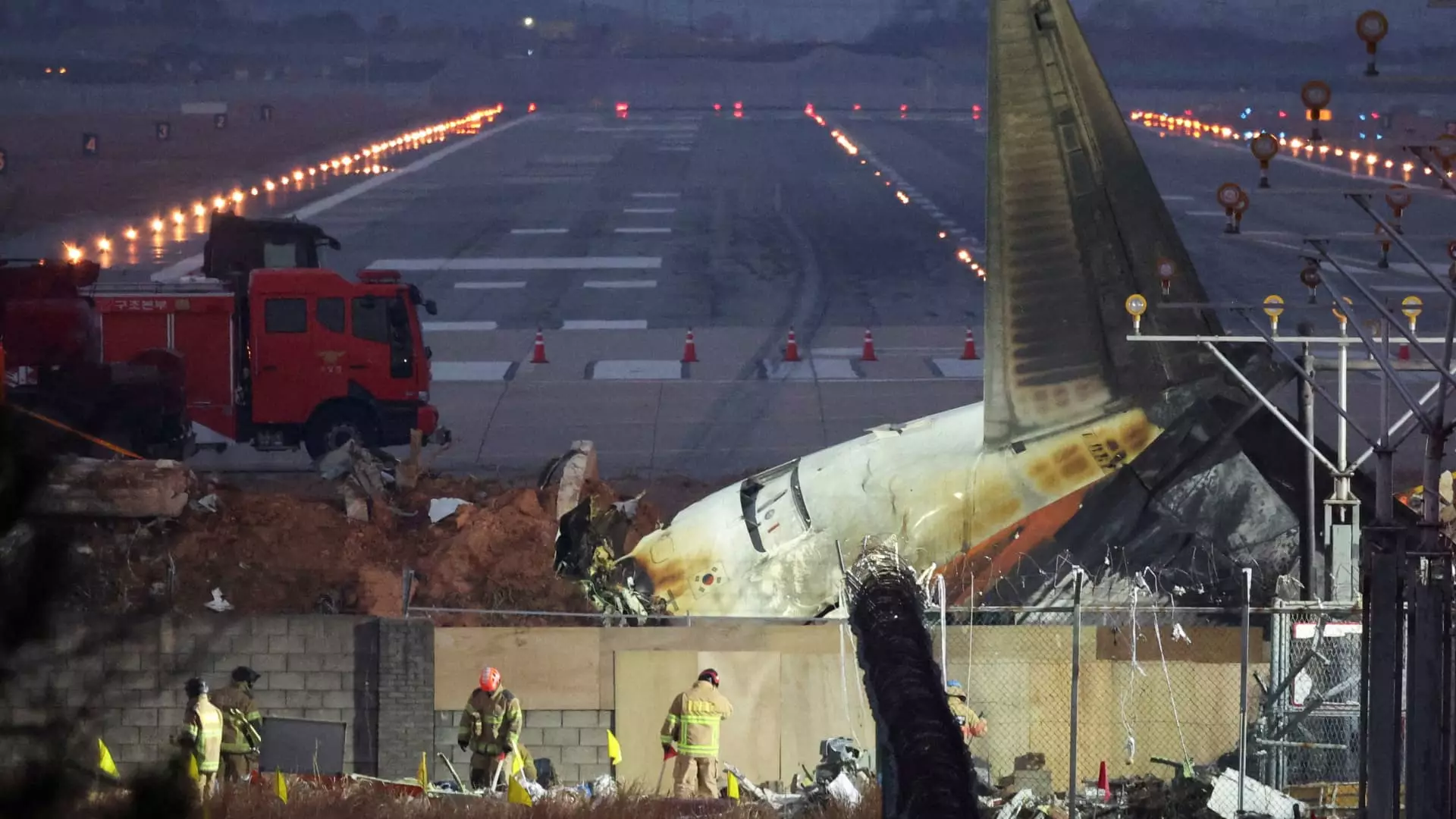On a fateful Sunday morning, Jeju Air Flight 7C2216 met a devastating end as it attempted to land at Muan International Airport. The Boeing 737-800, carrying 181 passengers and crew, belly-landed after what was initially believed to be a routine flight. Eyewitness reports and preliminary data suggest a critical malfunction, possibly due to retracted flaps and landing gear, led to this tragic event. The aftermath was horrifying, as the aircraft erupted into flames upon colliding with a mound of earth and an unmoving concrete wall situated beyond the runway’s edge.
The incident has sparked a significant debate among aviation experts regarding the safety and design of the airport’s infrastructure. Industry professionals have raised alarms about the strategic placement of a concrete barrier that obstructs the runway’s safety area. Todd Curtis, founder of Air Safe Media and a former Boeing safety engineer, argued that the presence of such obstacles made it exceedingly difficult for the aircraft to come to a complete stop. The intricate web of airport design needs reassessment, especially considering the possibility that better-engineered safety systems could mitigate tragic outcomes.
As investigators dive into this harrowing situation, the complexity of the investigation cannot be overstated. An extensive examination will cover various aspects, including the airplane’s maintenance history, pilot scheduling practices, and the analysis of flight data and cockpit voice recordings. Initial theories suggest that a potential bird strike may have contributed to an engine failure, although experts warn that it is premature to draw definitive conclusions. They stress the need for a thorough forensic analysis to understand the full scope of what transpired that day.
As more details emerge, the grave implications of the crash become clear. John Cox, an aviation safety consultant and experienced pilot, expressed the belief that the unfortunate fatalities may have largely stemmed from blunt force trauma caused by the airplane’s collision with the concrete wall. This raises pressing questions about the effectiveness of safety measures in preventing not just crashes, but fatalities resulting from those crashes.
In light of this tragedy, the aviation sector must reconsider the design and implementation of runway safety barriers. Effective alternatives such as Engineered Material Arresting Systems (EMAS) have been successfully used in other airports, including New York’s LaGuardia, to cushion crashes and prevent aircraft from rolling into disaster-prone areas. The stark contrast between Muan International’s setup and that of airports employing these advanced systems shines a light on a significant gap in safety protocols.
The crash of Jeju Air Flight 7C2216 is not merely a tragic event; it represents an urgent call to action within the aviation industry. It emphasizes the need for stringent safety standards, thoughtful airport designs, and ongoing advancements in technology and protocol. As investigators work diligently to uncover the root causes, there is hope for meaningful changes that prioritize passenger safety and prevent future tragedies. The aviation community must take this moment to reflect and learn, ensuring that no such disaster is repeated in the skies.

